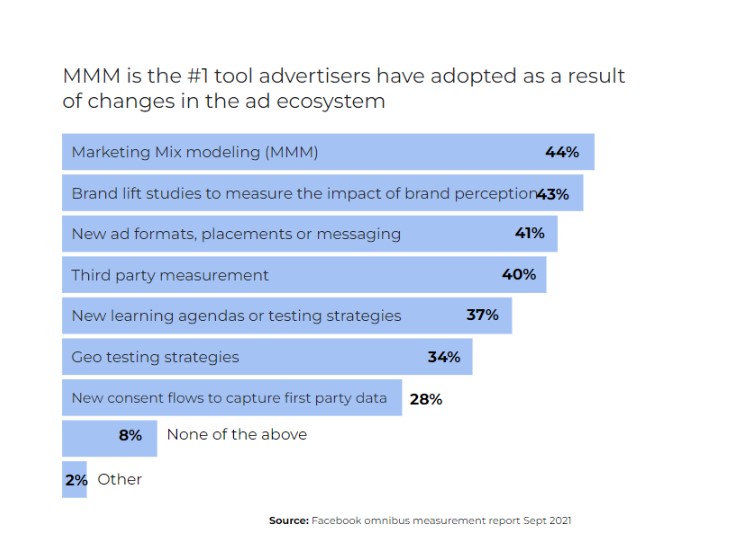
On reading the title you may think this is another op-ed on the need to introduce brand campaigns into your predominantly direct response digital marketing mix, but that isn’t the motivation for this piece. Instead, I want to explore the role of a gaming CMO in setting teams up for success and the risk that some leaders may actually be incentivising a race to the bottom.
Gaming UA teams are primarily, if not entirely, focused on optimization. I once asked a CMO of a multinational gaming company what he believed his role was and he said “driving the most efficient marketing possible”. This is the most senior, and presumably strategic, seat in the marketing organization and his ambition stopped at efficiency and lowest cost rather than truly effective marketing.
While efficiency certainly holds value, particularly when margins are slim, it’s crucial to recognise that a sole emphasis on cost-effectiveness alone is cause for concern. Put simply, what works today won’t work tomorrow and certainly won’t position you for long-term success. A focus on efficiency alone, on exploitation of existing channels and tactics is not a sustainable means of achieving a competitive advantage or fostering genuine growth.
At Facebook Gaming, we’ve seen this challenge presenting itself in two particular ways for marketing teams. Let’s look at these common pain points in more depth.
Up-leveling measurement
Attribution continues to be paramount for gaming UA teams and for the day-to-day optimization of campaigns and activations, there is currently no better system than a robust attribution strategy. However, attribution has always had flaws in both accuracy and in identification of real incremental impact, which have been exacerbated as a result of ecosystem changes in recent years. Research has shown that for some time¹ marketers have known they need to either change from or, at a minimum, supplement their attribution decision making with other approaches to measurement, but there is a consistent struggle in embedding these changes in decision-making.

Take Marketing Mix Modeling (MMM) as an example of a more holistic approach to marketing measurement. This is a top-down approach to modeling that seeks to strategically optimize spend towards where the most incremental gains can be found. As it does not solely rely on user-level data, it’s significantly more resilient to ecosystem changes and data gaps than attribution. Although there may be ongoing exploration into modeling and its outcomes, UA teams do not have the opportunity to adapt their budget decisions accordingly due to the lack of space and support for such adjustments. Several reasons account for the lack of significant progress, some of which are highlighted here. In particular, teams are not incentivised on the KPIs or targets that are outputs from this new approach and so they are limited in the full value they could realize. As exhibited by this research with Analytics Edge, gaming advertisers relying solely on attribution for decision-making are increasingly leaving money on the table.
Transforming creative
Mobile gaming advertisers build a high volume of new ads and new iterations, feeding these into marketing platforms seeking increased ROAS or reduced cost of acquisition. Regrettably, these efforts solely seek marginal gains in these metrics and often the patience doesn’t exist to realize the true value possible from a new and unique creative concept. If a team focused on optimization pairs with a machine focused on optimization, it’s unlikely that an asset that isn’t immediately optimized towards historical objectives or results will outperform quickly. The downside is that great ads that could find new audiences or address longer term objectives may never have the chance to succeed.
True creative exploration requires patience to run robust tests, patience to look at varying definitions of success beyond the immediate and patience to iterate and get to the best version of a new ad. While it may not make sense to invest in every case, it is important to create a process that allows for the possibility of innovation that will differentiate you from your competition. A combination of Creative Prototyping with a robust Creative Success Framework could unlock opportunities to do just that
Do your teams have the right objectives?
Both of these examples show an inherent autopilot mindset and impatience that exists in gaming teams. They exhibit a short-termism that could be detrimental to the success of your business. Reflect on whether these actions and decisions are congruent with your broader organizational objectives:
If these do not align with the strategic goals of senior management, consider implementing incentives and processes to prevent these pitfalls from occurring. Maybe someone on your team can have different KPIs to others? Can you implement a process to check that your team’s daily and weekly decisions are laddering up to the overall results you need or expect? Could you triangulate KPIs across different sources? Or assign a certain percentage of budget to “innovation” with a different set of goals or targets? Marketing is a results driven business but you decide what that means. As a leader, it is your responsibility, along with your leadership team, to establish an environment that fosters ambidexterity and enables the best decisions, even if some of these decisions may contradict short-term efficiency goals.
If you, personally, are afraid to make these kinds of changes, if you are afraid to change from “what works today” or aren’t rewarded for the ambition you need to have then it might be time to talk to your CEO. The drive for continuous improvement should be rewarded, but due to existing systems and human aversion to change, this may not always be the case. We have to recognise that for ourselves and others what is right for long-term success may not always align with personal interests. This becomes even more evident in the realm of mobile gaming during times of economic challenge or intense competition, as innovation and distinctive advantages become crucial. If you find your margins strained or are constantly battling with competitors, it’s essential to consider how long you can afford to delay making necessary changes. Waiting may result in missed opportunities and put you at a disadvantage in the future.
So before external factors force you to change, take the necessary steps to implement effective change today. Get agreement on what your role should be for the benefit of your business, set goals for yourself and your org that align to that and empower your teams to innovate AND optimize towards those goals. How these decisions are made could be the competitive advantage you need for your game.
¹AppsFlyer and MMA Global, “Apple, IDFA and iOS14: New Challenges, New Opportunities for Marketers,” Nov 17, 2020
Manager Marketing Science EMEA, Facebook Gaming, Meta
 GameDaily.biz © 2025 | All Rights Reserved.
GameDaily.biz © 2025 | All Rights Reserved.